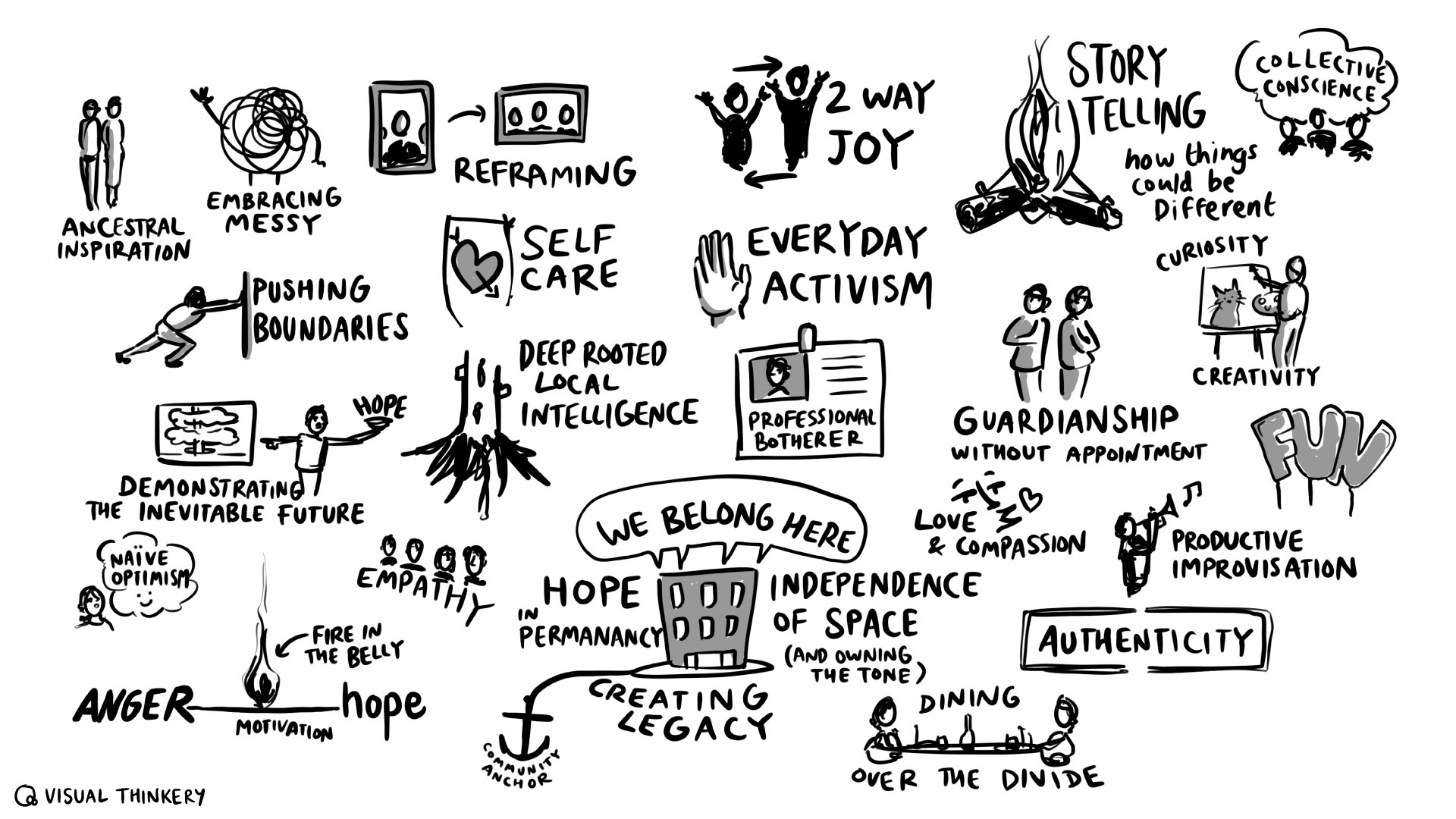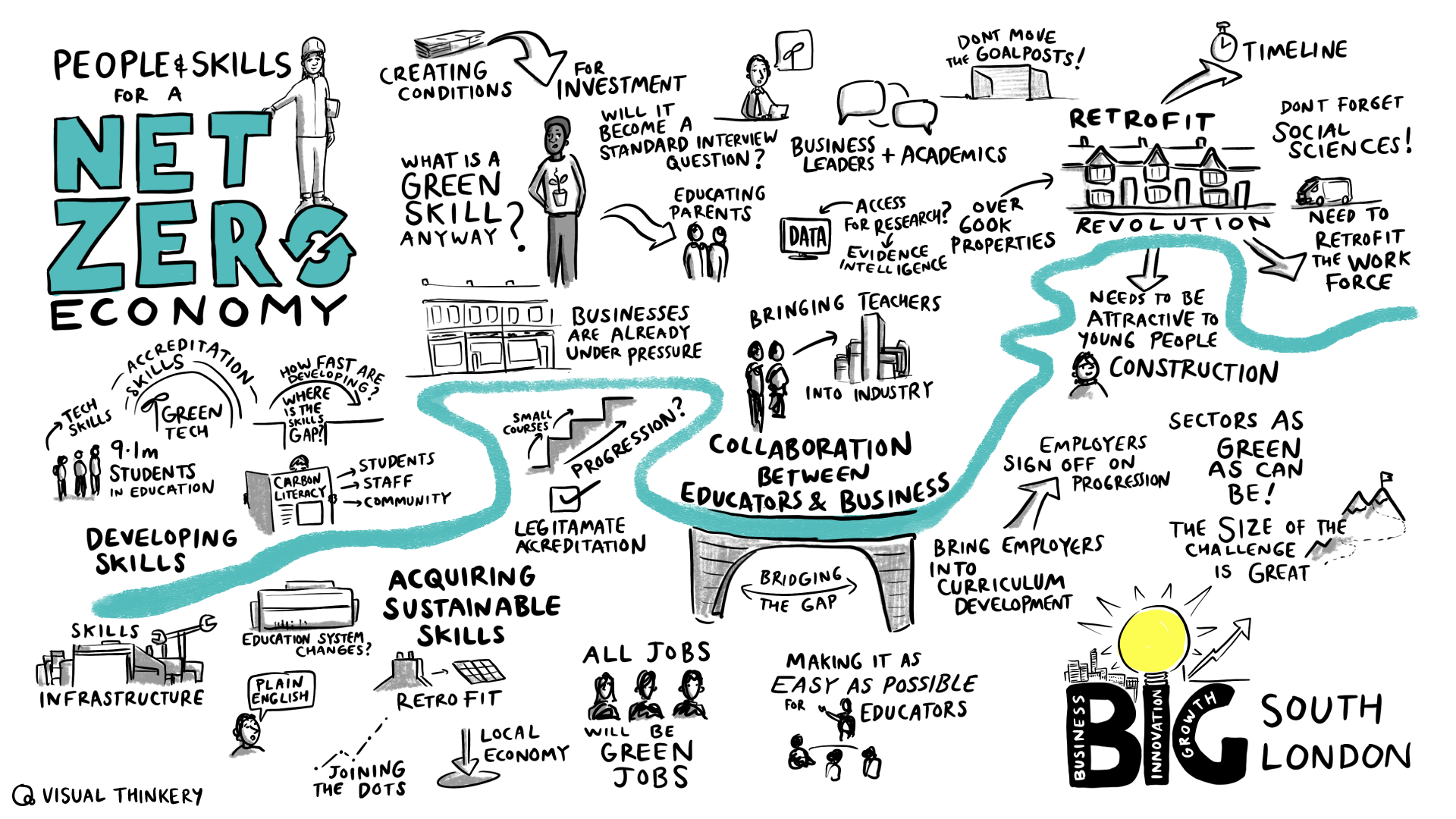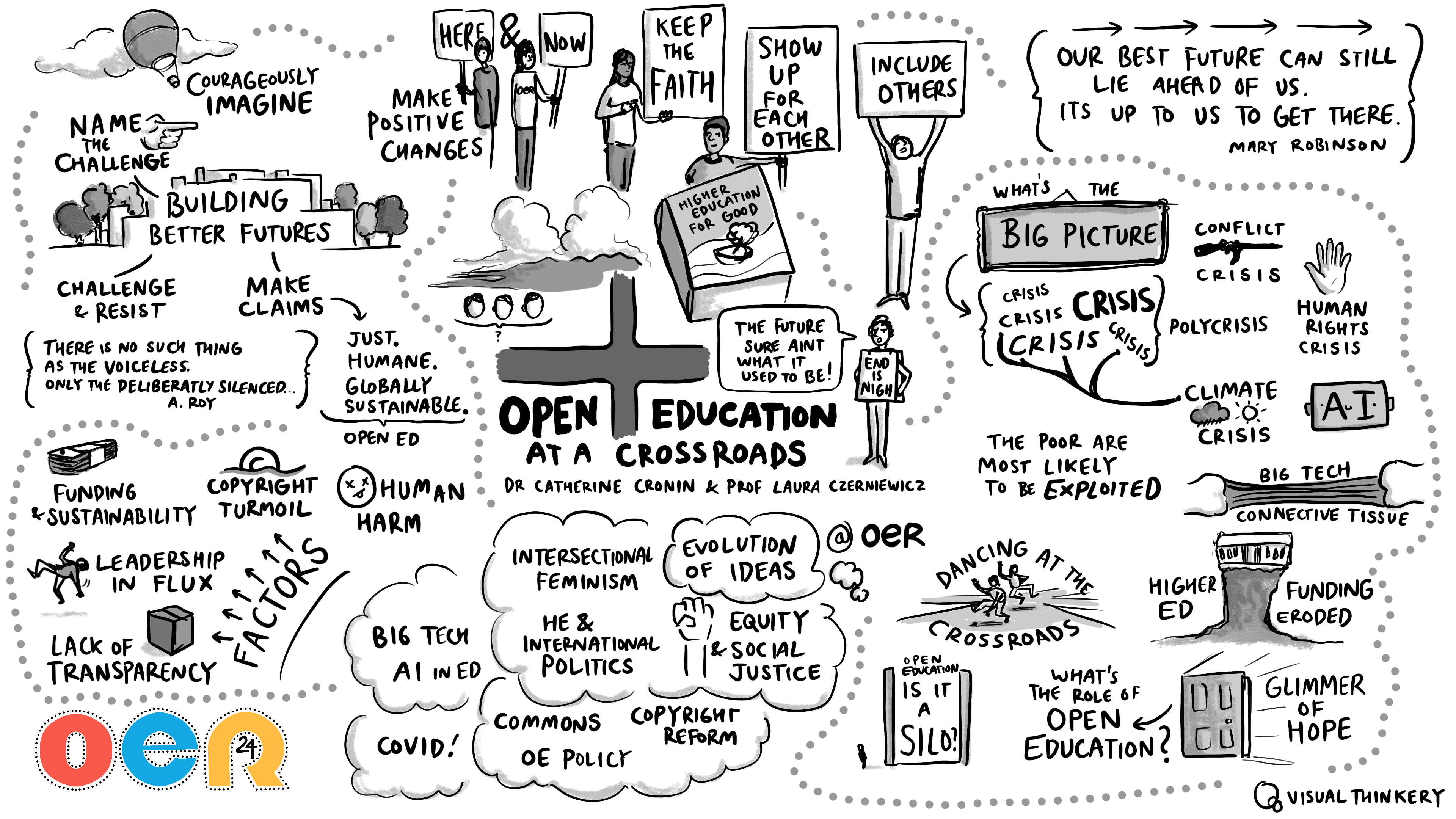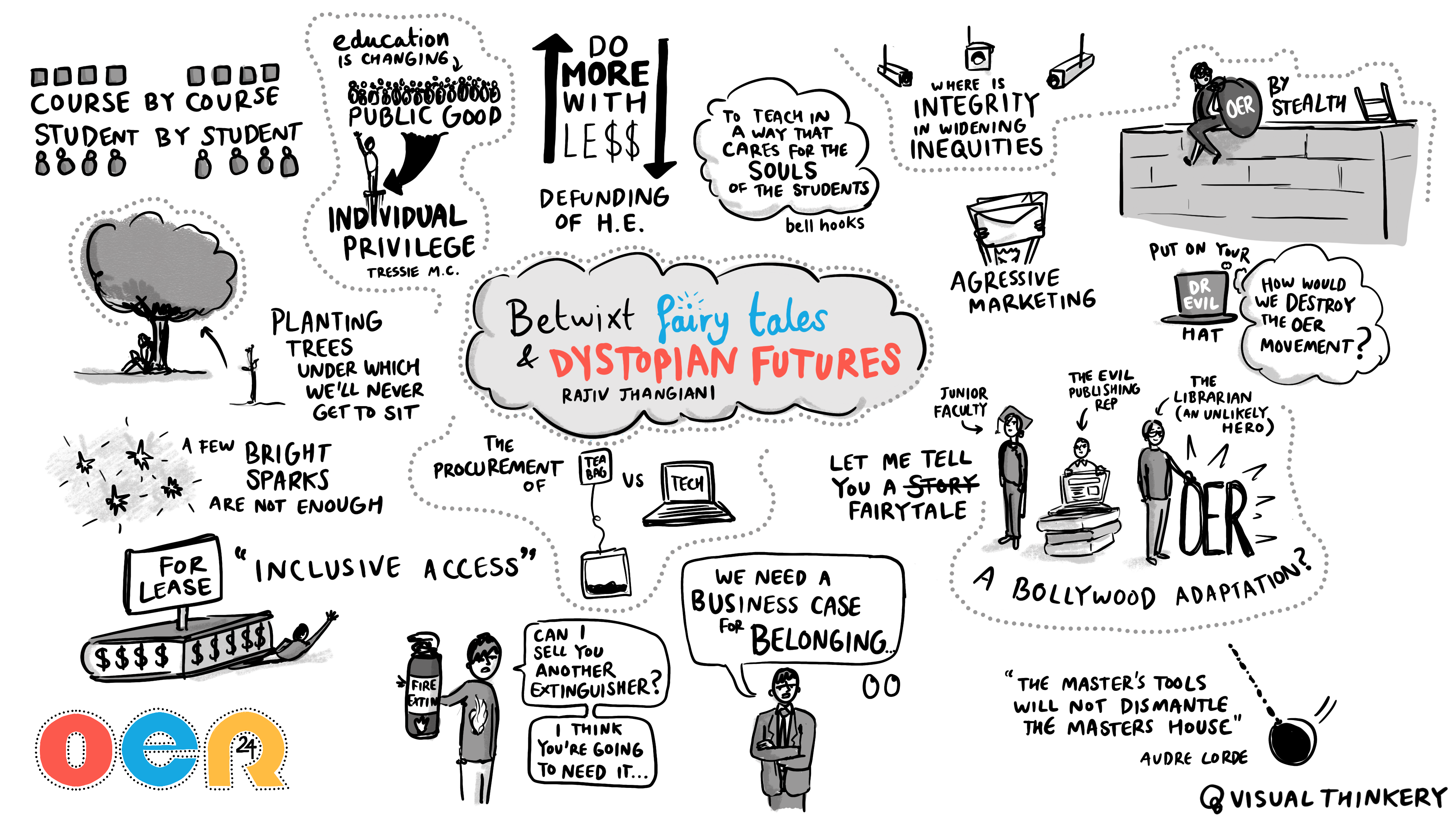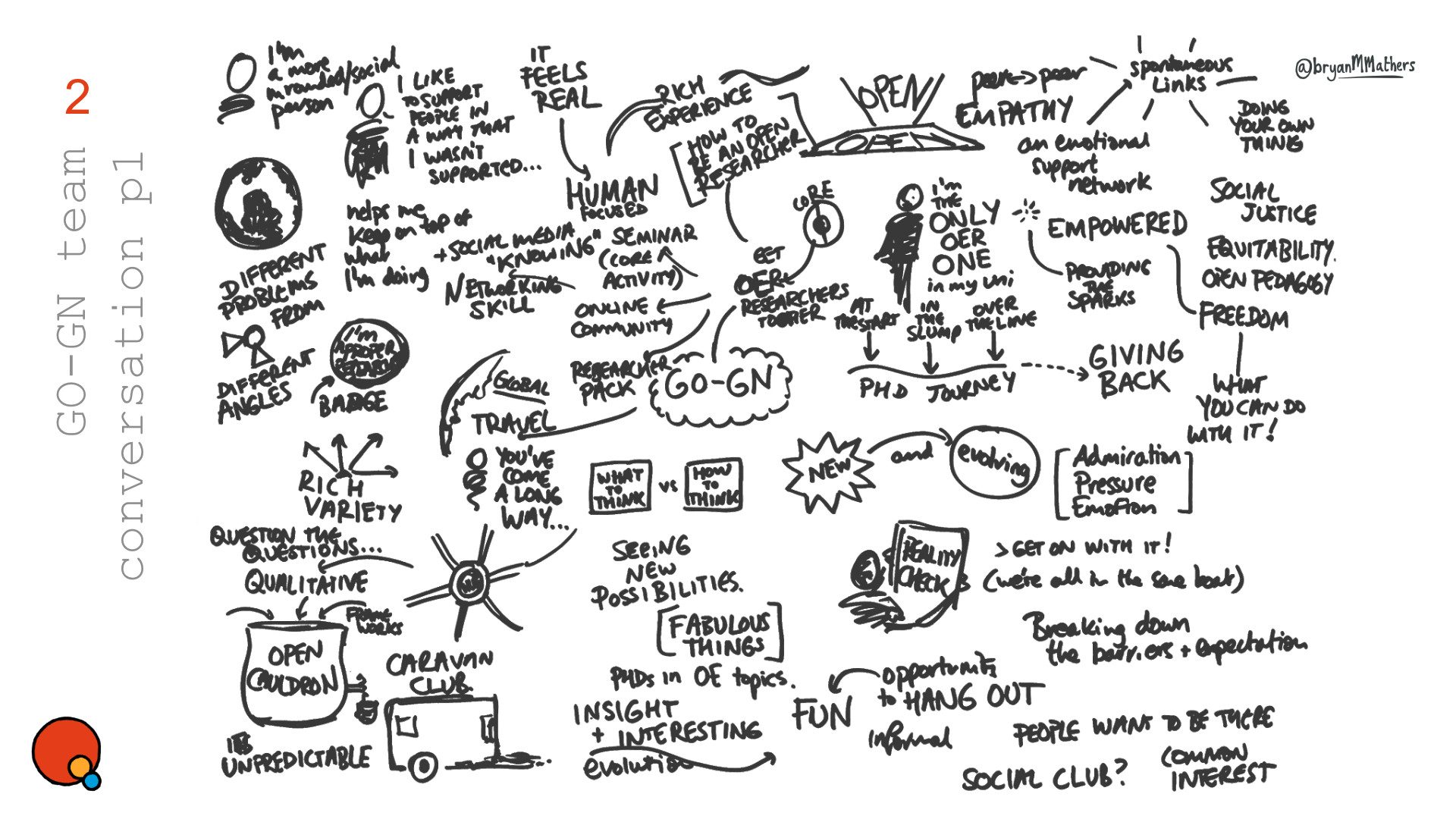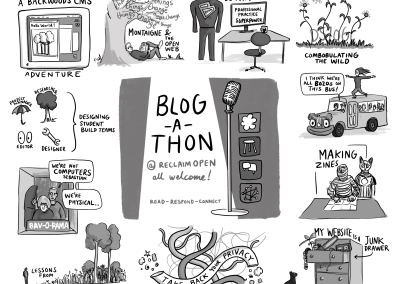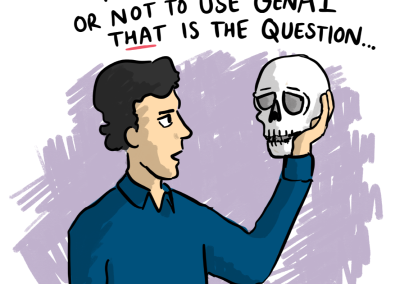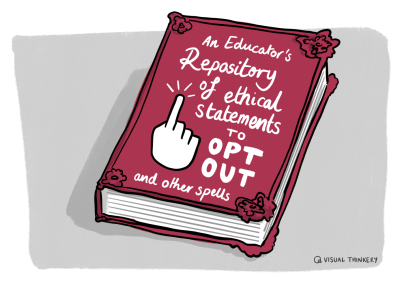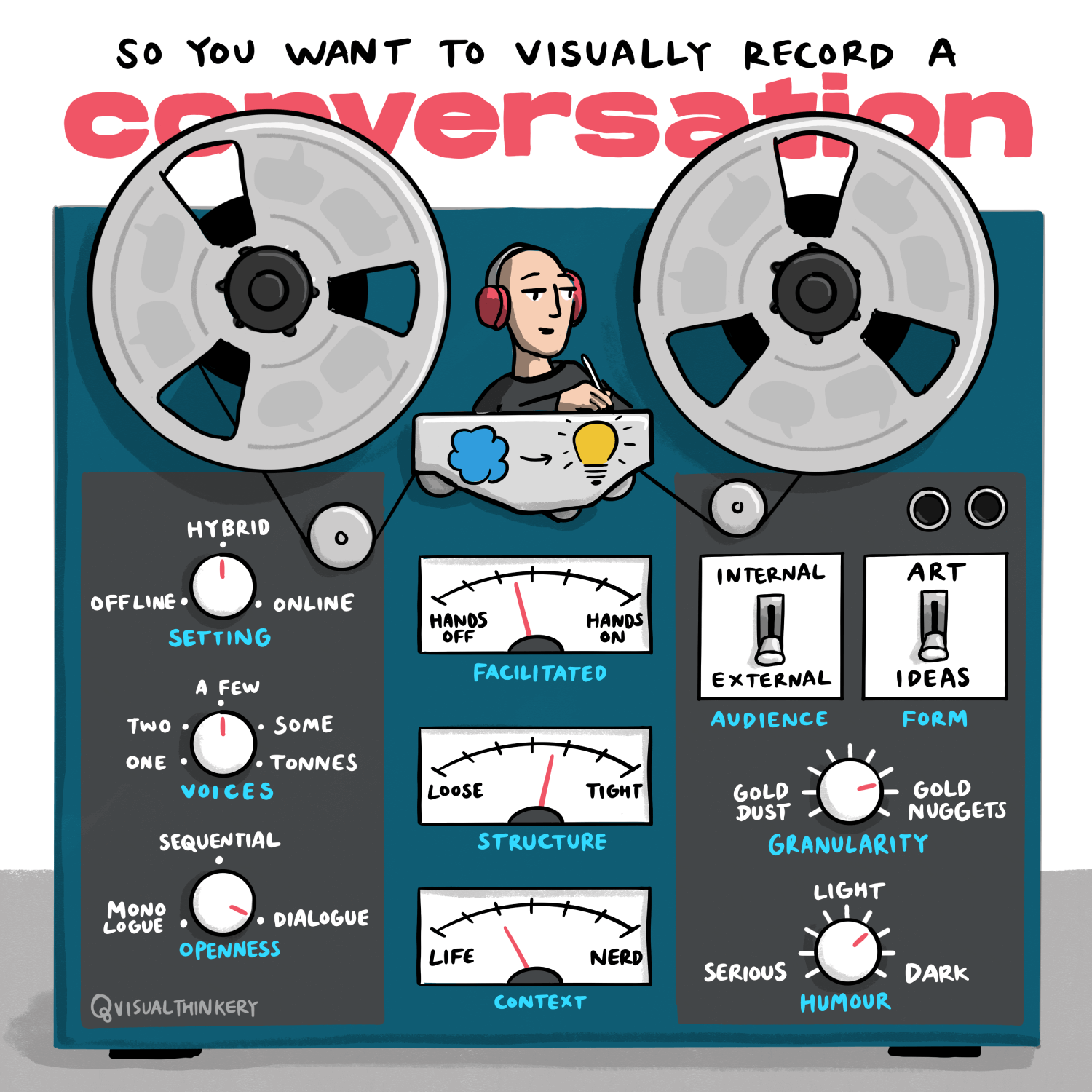
Visually recording a conversation
Most of what I create has its roots in conversation.
Open conversation sits at the heart of Visual Thinkery’s “10 ideas” process. Usually I’m able to record it and then go back through and visually harvest the conversation for visual ideas. However, I employ the same tricks when capturing live conversation in a sketchnote. Drawing anything can seem like a conjuring trick – and there’s definitely something to be said for that magical feel. I take a messy conversation as it wisps through the air and I lay it out in a visual landscape for others to wonder at, both during and after the event. An artefact is created from a unique set of people and their thoughts at a single point in time.
Watching it unfold
Both online and in-person, it’s possible to display what is being captured in real time. But displaying the visualisation of a conversation as it’s being conjured changes the nature of that conversation. People can point to where a previous part of the conversation left off – and add their penny’s worth. Have you been in a meeting where you realise you have a great bit of insight, but the conversation has moved on? Having a visual map allows you to go back, insert a piece in the emerging puzzle and jump back to where the conversation is. It can be a really useful feature when capturing a conversation of a large group.
There are a lot of knobs to twiddle when thinking about visually recording a conversational event. Some of which might be fixed depending on the intended output whilst others may be flexible.
Here are a few things to consider:
Setting – Where are people? Does the technology enable everyone to have an equitable input to the conversation?
Voices – How may people will their be? What does this mean for the quality of the conversation?
Openness – How open is the conversation? Will it be a one-way monologue (like a keynote address)? or sequential monologue (like a webinar)? or multi-way dialogue?
Facilitation – How guided with the conversation be? Is there time and persmission to explore tributaries and cul-de-sacs?
Structure – Is there a certain bunch of material that we need to step through? Or certain themes and topics that need to be covered?
Context – How much context do I need in order find meaning in the conversation (or even facilitate it). Can I play the curious idiot or do I need a PhD?
Audience – Who are we ultimately creating for? An internal or external audience?
Form – Where is the priority: to create something pretty? or create something meaningful?
Granularity – Are we trying to capture all the things? Or should we focus on a nugget if come across it?
Humour – a cartoonist’s greatest weapon – how will the conversation encourage the possibility of humour?
Here are a few examples
Facilitated conversation between a group of social activists about what they have in common.
Setting: offline Voices: some Openness: dialogue Audience: Internal Form:ideas
Panel discussion at all day event.
Setting: offline Voices: a few Openness: sequential monologue Audience: external Form: art
Keynote at OER24 conference on Open Education (Cork, Ireland)
Setting: Theatre Voices: one Openness: monologue Audience: external Form: art
Keynote at OER24 conference on Open Education (Cork, Ireland)
Setting: Theatre Voices: one Openness: monologue Audience: external Form: art
Internal Project Brainstorming conversation
Setting: online Voices: a few Openness: dialogue Audience: internal Form: ideas
If you’d like to talk more – please get in touch!
Read next
Here are some other projects you might be interested in.

